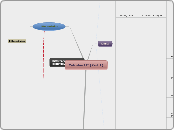Calculus III (Part 1)
Limits
Squeeze Theorem
Suppose g(x)≤f(x)≤h(x) and if the limit of g(x) at x=c is Y and the limit of h(x) at x=c is Y, then the limit of f(x) at x=c is also equal to Y.
e.g.

Finding Limits
Common Techniques
Direct substitution
When both numerator and denominator = 0 or ∞
L'Hopital's Rule

e.g.



Convert to either of the other forms


When limit exists
e.g.

Infinite limits
e.g.

Factorising and simplifying

Divide by highest power

Multiplying by a conjugate surd

Using a graph or table of values of the given function

For eg, finding the above limit:

A table of values of f(x) as x approaches 2
Common useful identities

Defintion
Normal definition

Formal Definition

Left and Right limits

Right and Left hand limits

Differentiation

If the above limit exists, then f(x) is differentiable (limit to the difference quotient).
Differentiating
Derivatives and Applications
Local Linear Approximation
When f(x) is differentiable,

Motion along a Line

Equations of Tangent and Normal lines
Slope of tangent = m = dy/dx
At a point of xy-coordinate of (a,b) Equation of tangent line is: y-b = m (x-a)
Slope of normal = -1/m
At a point of xy-coordinate of (a,b) Equation of tangent line is: y-b = -1/m (x-a)
Maximizing and Minimizing variable quantities
Formulate appropriate equation
Set required domain.
Make use of Extreme Value Theorem (see "Theorems")
Related Rates

useful link:http://en.wikipedia.org/wiki/Related_rates
Parametric Functions
Finding the Derivative



Converting to Cartesian form

x=rcos@, y=rsin@,@ reprsents the angle
tan@=y/x,@ represents the angle
Arc length of the Curve
sometimes, a curve would be in parametric forms, X=f(t),Y=g(t)

if y=f(x) is a somooth curve on (a,b)

Tangent lines in Parametric curves
Polar Functions
Finding the Derivative



Tangent Lines to Polar Curve
Arc Length of the Polar Curve

Vector Functions
Derivatives
suppose r(t)=<x(t),y(t),z(t)>, then r'(t)=<x'(t),y'(t),z'(t)>
Suppose the curve C is the graph of a vector- valued function r(t)
Tangent Vectors

Normal vector

Definition

Useful link
Theorems
Mean Value Theorem
Rolle's Theorem
![Let f be continous on the closed interval [a,b] and differentiable on the opne interval (a,b). If f(a)=0 and f(b)=0, then the](https://cdn1.mindomo.com/resources/img/editor/imagesources/loading-image.svg)
Let f be continous on the closed interval [a,b] and differentiable on the opne interval (a,b). If f(a)=0 and f(b)=0, then there is at least one point c in (a,b) such that f'(c)=0
![Let f be continous on the closed interval [a,b] and differentiable on the open interval (a,b). Then there is at least one poi](https://cdn1.mindomo.com/resources/img/editor/imagesources/loading-image.svg)
Let f be continous on the closed interval [a,b] and differentiable on the open interval (a,b). Then there is at least one point c in (a,b) such that f'(c) = (f(b)-f(a))/(b-a)
Extreme Value Theorem
Locating Absolute extrema
If f(x) has only 1 relative maximum(minimum) at x=c in any given interval, then x=c is also the absolute maximum(minimum) of f(x) in that given interval.
![To locate absolute extrema on a finite, closed interval [a,b], evaluate f at all critical points and both endpoints. The larg](https://cdn1.mindomo.com/resources/img/editor/imagesources/loading-image.svg)
To locate absolute extrema on a finite, closed interval [a,b], evaluate f at all critical points and both endpoints. The largest of these values is the absolute maximum value of f on [a,b] while the smallest value is the absolute minimum.
Interpretations of f(x) and f'(x) on the graph of f(x)
Concavity

Inflection point is when the graph of f(x) changes concavity
occurs when f''(x) changes sign
Critical points
Locating and Identifying critical points

f'(x)=0 or does not exist

First Derivative Test

Second Derivative Test
Techniques

Basic differentiation

Product Rule

Quotient Rule

Derivatives of Trigonometric functions

Chain Rule

Derivatives of exponential and logarithmic functions

derivatives of inverse trigonometric functions
Implicit differentiation

link to e.g. Folium of descartes

inverse functions
Continuity
Epsilon-delta defition of Continuity

Hyperlink to Applet -->
When function is continuous, we can use
Extreme Value Theorem
If a function f is continous on a finate closed interval [a,b], then f has both an absolute maximum and an abolute minimum
Intermediate Value Theorem
If y=f(x) is continous on interval [a,b], and u is a number between f(a) and f(b), then there is a c between [a,b] st. f(c)=u
